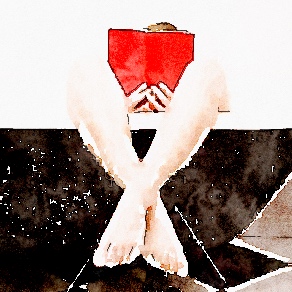The Wanderings of Brother Felix Fabri
 I was reading Felix Fabri in the bath the other night (and I did not dropped him into the tub), when I very appropriately I came across the passage of his visit to an Arabic bath house in the city of Gaza. Enjoy! And if you ever have the chance to visit a Turkish bath in Budapest or a Moorish bath in Spain – do not miss the experience!
I was reading Felix Fabri in the bath the other night (and I did not dropped him into the tub), when I very appropriately I came across the passage of his visit to an Arabic bath house in the city of Gaza. Enjoy! And if you ever have the chance to visit a Turkish bath in Budapest or a Moorish bath in Spain – do not miss the experience!
For those of you who don’t remember who Felix Fabri was (or have never heard of him): He was a German monk from the city of Ulm who made two pilgrimages to the Holy Land in 1480 and 1483. He was blessed with an inquiring mind, an eye for detail, a photographic memory and the gift of the gab. He does at times bore you to tears with the many indulgences (plenary and otherwise) which he collects by kissing the various most holy places in the company of his fellow pilgrims but he can most entertaining when he goes beyond the details of the religious pilgrimage and talks about people, foreign customs, novel experiences or travel mishaps. Of which, as you can imagine, there was plenty of in the 15th century while touring an enemy land!

A NOTABLE HOT BATH, WHEREIN THE PILGRIMS MERRILY BATHED TOGETHER WITH THE SARACENS
…this bath at Gazara is the most costly one that I have ever seen.
In front of the hot-room there is a vaulted building which encircles it like the ambulatory of a cloister, in which building there are many cells, without any beds, but floored with mats and plaited palm-leaves. Each cell is merely closed by a curtain. In these cells those who wish to bathe undress and dress themselves, and in the same cells there hang clean cloths with whcih those who wish to go into the bath cover themselves, from the navel to the knees, instead of breeches and girdles, so that one is completely covered both before and behind.
In the midst of this cloister there is a fountain which plays through many pipes out of a marble column, and all the walls and the pavement, both without and within the hot-chamber, are cased with divers kinds of polished white marble, so that he who passes over it must be careful and walk warily, lest he slip, even as one who walks upon ice.
The hot-chamber itself is like a square tower, and the dome or vault which covers it has no roof over it, but has many round holes, of about the size of a man’s head, closed with windows of glass of divers colours, through which there comes a dull light, but enough. In this hot-chamber there is no furnace, neither does one feel the heat or smoke of a fire; but in one place there is charcoal beneath the pavement, whereby the marble pavement is heated, and hot water which runs along a channel hollowed in the stone fills the whole rom with heat. On the other side cold water comes in.
The chamber, as I have said, is square, and has no light save what comes through the holes in the dome. On the first side there is extreme heat and hot water; on the second there is coolness and cold water; the third side is free and quiet; in the fourth is the door; in the middle is temperate heat.
The master of the bath himself most kindly and courteously waits upon the bathers, frequently rubbing, washing, and anointing with smegma, or other fitting ointment; for they cure weakness of the limbs in the bath. If anyone feels pain from any cause, the bathman rubs, anoints, presses, and stretches the place where the pain is felt, until he either cures it or alleviates it…
In the bath men and women never meet, but the women have their own proper baths, and the men likewise; neither do the men have women to rub them, nor do the women have men, but men wait upon men, and women upon women.
(The Wanderings of Felix Fabri by Felix Fabri)
Links: ⇒ The Wanderings of Brother Felix Fabri ⇒ Once to Sinai: The Further Pilgrimage of Friar Felix Fabri by H.F.M. Prescott ⇒ Narrative History at its Most Enthralling: Interview with Roger Crowley ⇒ Fratris Felicis Fabri Evagatorium in Terrae Sanctae, Arabiae et Egypti on Project Gutenberg

